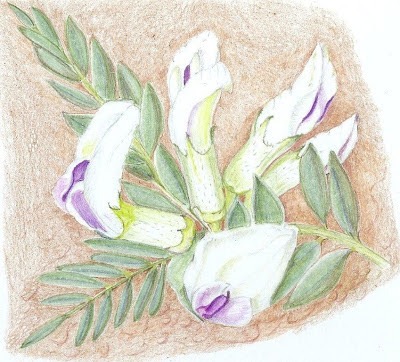Well, it's March, and that means our annual fire-up our drawing skills event begins. It's Drawing a Day time! Admittedly the season is still officially winter, but spring is not far behind. It's a great time to sharpen up our drawing skills, so that when nature entices us out of doors, we'll be ready to capture the things we love in art. So, let's chat about the concept a bit.
Here's the premise:
Drawing daily integrates art into your life. It helps you know what you know. Sounds a little simple, but sometimes we forget what we've become comfortable with, as we haven't used that skill recently.
It helps you know what you don't know, and that leads you to find out how to remedy the have-nots.
It leads you to new solutions, to new explorations, to new growth.
Here's how to start:
Draw every day,
at least six days a week.
Draw
at least ten minutes a day, more if you want.
Draw
any subject.
Use
whatever materials you want to, and take this time to try some new ones!
This is a drawing a day event, not a painting a day. Stick to a simple selection of materials, inspiration and other needs and push them to get the effect you want. Remember that your drawings are like practice scales on a musical instrument: you don't always have to play the whole tune to get really good skills. Here are few drawings from my sketchbooks using a variety of media:
Three colors of ink work great for getting the basics of a duck afloat
Graphite and colored pens work great for quick field drawings and field notes
so that when I go to the studio, with my field studies and
photos, I can create a full drawing or painting.
Quick shell drawing on toned paper,
using the paper as the mid-tone
Some suggestions to make your drawing a day experience easy, fun and so beneficial to your skills:
Find inspiration, and keep it at hand: This includes books, your own sketchbooks, specimens that fire you up, photos that you've been meaning to turn into drawings...it all helps.
From left, Sketchbook Confidential by Pamela Wissman and Stefanie Laufersweiler gives you some great insights as to how other artists use their sketchbooks. Very inspiring. Center is Twyla Tharp's The Creative Habit, Learn It and Use It for Life, which is a practical guide to making creativity a daily, sustaining event in your life. Far right is Stanley Maltzman's Drawing Nature,
with amazing drawings and tips and techniques for the lover or natural realism.
Gather your materials, sketch book/s and inspirations in one easy-to-maintain spot.
I'm going to be using Copic pens, a ballpoint pen, a 2B graphite pencil, and some colored pencils as my basic kit. I'll work in pen and ink, pen and ink with graphite, graphite, graphite with colored pencil, and colored pencils. I have my little "travel tin" stocked with all the basics, so sharpener, impressing tool, blender, stump, scissors, kneaded eraser (for drawing not erasing!), a view finder, a brush that holds its own water supply for watercolor work when I want it, and dusting feather are always available.
I'll be using a variety of sketch books, including one with a toned paper. Toned paper is cool! It provides your mid-tones in a drawing, and lets you add light AND dark effectively and quickly.
From top to bottom: a 5x5" HandBook, perfect bound in many little signatures so it opens flat. I love these sketchbooks - the paper is creamy, stiff, and the results always seem important when I use this sketchbook. Middle left is Strathmore's Toned Gray medium surface 5.5x8.5 wire-bound sketchbook. Paper has great tooth, is smooth enough for fine detail, but also gives subtle textural effects with different media. Lower right is Big Art's Hybrid Pad, half smooth art stock, half vellum bristol. Two surface treatment, both a stiff bleed-proof acid free sheet.
Get your drawings done early, before the realities of the day take over.
Don't bother to erase. There are really good reasons to skip erasing. Without erasures, you leave the earlier lines as a base to build the right lines on. You won't repeat a bad stroke. Not depending on an eraser to save you, you'll develop stronger, more limber, more competent, more flowing, more fun work! And you'll find you're much more forgiving about your work, because you're not working so much to the end product, as to the process.
Have fun! Let this exercise rock your day, start it with a bang, end it with a sigh of pleasure...whatever works for you.
Send us the results. Each day at least one drawing will be added to the blog. Send yours to
rmsbartists@gmail.com. Let us know your name, materials, and any words about method, inspiration, materials, problems and triumphs you want to share.
Take a moment today to get your materials and inspirations together. Find a spot they can live for the month, easy to access. And let's get drawing!












































